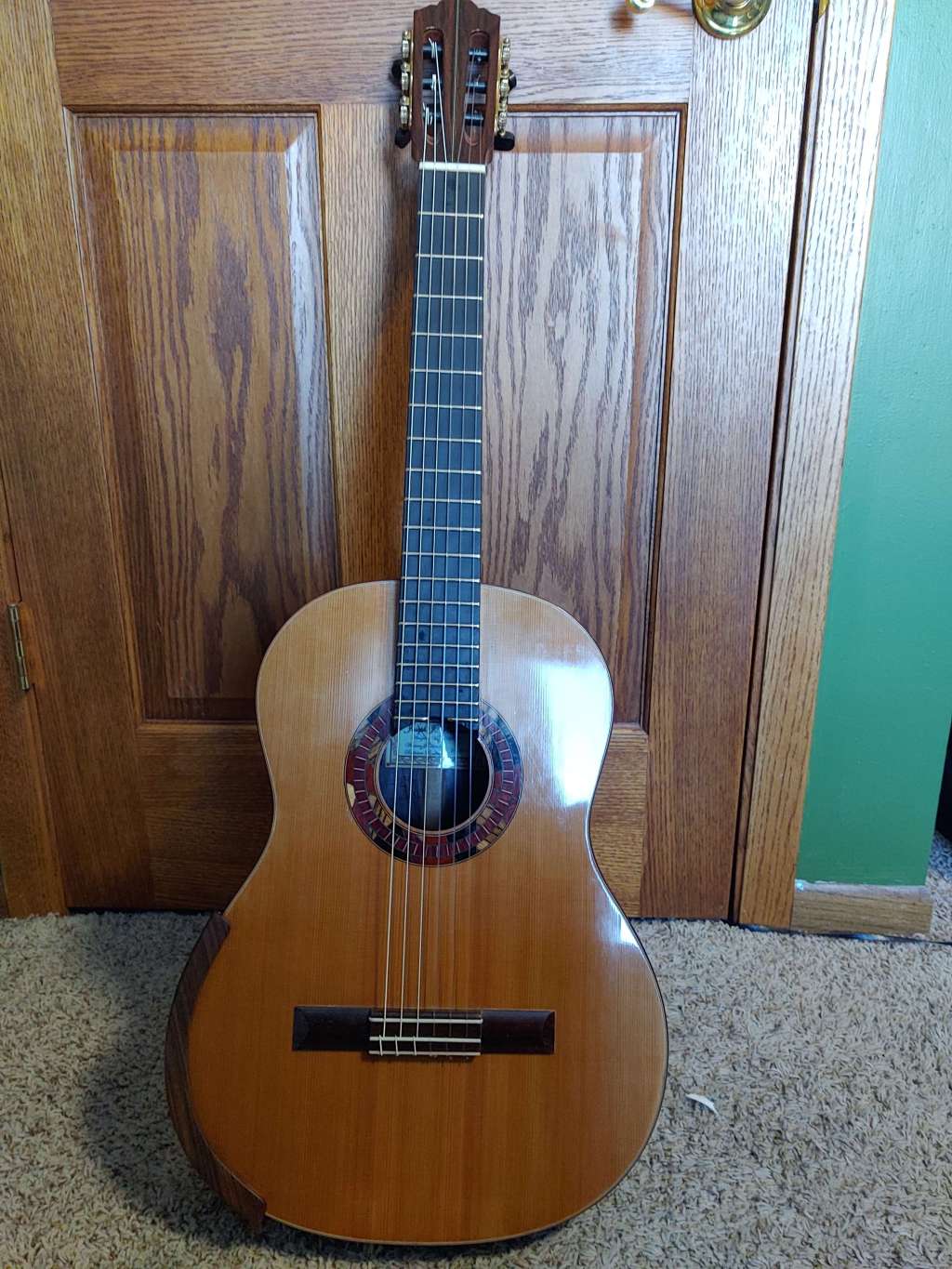In the mid-spring of 2020, having not much else to do (for obvious, historical reasons), I purchased my first classical guitar on a whim and impatiently waited for it to be dropped on my porch. I’d never really considered studying classical guitar before that, but there was something that I was after that I figured I could find in that field.
Prior to that spring, almost my entire guitar-playing time had been spent on electric instruments. Usually featuring plenty of gain. But there are two factors that made me want to search for that aforementioned “something.”
Two Factors
The first was that I’m situated in a pretty rural area. There aren’t a lot of options for meeting a lot of other musicians, let alone forming ensembles of like-minded people. In years past, I would find myself driving all over to attend band practices or rehearsals or what-have-you.
This made the prospect of a self-contained study of the instrument really appealing. I envisioned learning how to be a completely self-sufficient musician, much the same way that you can view the pianist as someone that can provide their own accompaniment and melody.
The second was that, even had I been in a more populated area just brimming with musicians, I figured that I’d still be in great shape if I spent time learning how to approach the instrument in what I started to view as the Third Way. Plus, I wouldn’t have to wrangle with everyone’s schedules. That is an incredible advantage.
The Third Way
I should note that this is just my personal terminology for this (and it may have been coined just for the sake of this article). That said, I generally think that guitar, as we think of it, gets used either as a horn or a drum.
If you think about it in “horn” terms, it’s being used to play a bunch of ripping single-note solos over top of some harmonic structure. Or it’s being used to pick out a melody one note at a time.
In “drum” terms, it’s being used as a time keeping device to comp or mash out power chords or something in between.
This is obviously an oversimplification that does an amount of violence to what the guitar gets used for in reality. But those two buckets are big enough that you can kind of stretch the usage of the instrument to fit in those two in general terms. This is certainly not an attempt to pass judgment on that kind of playing, either – I would be remiss if I didn’t mention the amount of La Pompe I’ve played on my Selmer-style guitar. I’m firmly in this horn-and-drum dichotomy from time to time, and I enjoy it!
So, what about this “third way”? I saw classical guitar as an opportunity to treat the guitar as something that was capable of doing both of the above at the same time – to produce harmonic context and rhythm while also playing a melody above. Even though I was only dimly aware of the work of Segovia, at that point, I knew that what I had heard from him sounded like two guitars, to my ear.
I wanted that for myself.
Value
I think this approach has value for guitarists of any genre, even if one doesn’t want to grind away at classical repertoire with a nylon-strung acoustic. Imagine the possibilities of taking full advantage of the instrument to produce richer soundscapes!
The guitarists that came before, working away at compositions that treated the guitar as a solo instrument first and foremost, have a lot of insight to offer. Our electrified instruments aren’t all that much different, and the lessons are largely applicable to them.
We are quite a bit louder, though.

Leave a comment